With a slight movement of the hand, the bedroom turns intooffice, a wardrobe - into a table, and a table - into a bed? Yes, yes, in transformable apartments even such things are possible. Small city apartments stimulate architects and interior designers to search for non-standard solutions. And these solutions, if they are successful, allow, without compromising convenience, to combine seemingly incompatible things in one room. We have already written about , and today we have made a selection of the most interesting and unusual of them for you.
1. Apartments in Warsaw
The authors of the project, designers Becky Nix (BeckyNix and Aleksander Novak-Zemplinski believe that the smaller the space, the more organized it should be. They took into account their experience of living in small apartments and tried to improve the space of this loft as much as possible. Now you can move furniture, things, customize the space for yourself. The designers wanted the house to have a large living room, but at the same time, for guests to have personal space. So they came up with the "Cube". When folded, it is a real mystery. But as soon as you lower the bed and pull out the doors to "build" the walls, the space changes rapidly. In addition to the bedroom, the apartment also has transformers. For example, if you put the coffee table vertically, it easily turns into a bar stool.



2. Bedroom office in Japan
Tokyo architect Yuko ShibataShe often works from home, and when she and her husband bought a house, she knew she needed an office. But her husband wanted a cozy home, not a workspace, so Yuko came up with a trick: instead of making a separate office somewhere in the corner, she used the space of the entire room. For inspiration, Yuko turned to traditional Japanese sliding screens - fusuma, which separate rooms in houses. She cut a hole in the bedroom wall and installed a huge hinged door with built-in bookshelves. During the day, it is a spacious and comfortable office, and by evening the room turns into a cozy bedroom. The space seems larger than it actually is, thanks to the bright green color of the walls. And a complete renovation of the apartment cost much less than renting an office for three years.
3. Tiny Manhattan Apartment
Manhattan is a prestigious area of New York City withexpensive real estate and, as a result, small apartments. The 65 square meter apartment is home to a family of three: Michael, Joan and their son Jonah. The project's architect Scott Oliver and his partner Margarita McGrath came up with several tricks to save space. In its usual form, this bookcase in the living room does not take up much space and allows for parties and active games with children. And if the owners want to have a snack or do homework, they simply lower the tabletop onto a special mobile cabinet, which firmly fixes the tabletop.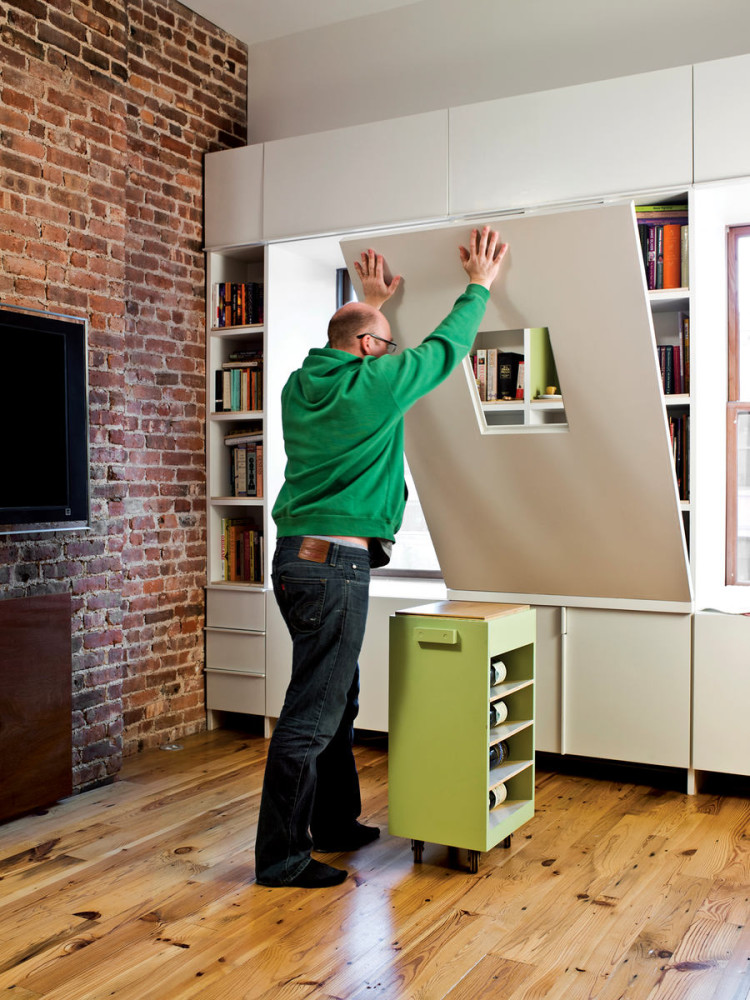

 Nine-year-old Jonah always dreamed of having a home,like a pirate ship. His new room is a dream come true. Jonah now proudly shows off his sleeping arrangement, from bed to desk and back again. And floor hatches in the mahogany floor reveal eight-inch-deep cavities for storing clothes, toys, and electronics. Children and friends are important to this family, and the renovation was designed more for their convenience than for personal belongings. Aside from Jonah’s impressive toy collection, the family has minimal possessions. The storage units were designed and built by Strand, a firm McGrath first encountered when the couple were students at Virginia Tech. They hired Strand to handle all of the wood in the apartment, including the kitchen cabinets, living room bookshelves, and pine flooring.
Nine-year-old Jonah always dreamed of having a home,like a pirate ship. His new room is a dream come true. Jonah now proudly shows off his sleeping arrangement, from bed to desk and back again. And floor hatches in the mahogany floor reveal eight-inch-deep cavities for storing clothes, toys, and electronics. Children and friends are important to this family, and the renovation was designed more for their convenience than for personal belongings. Aside from Jonah’s impressive toy collection, the family has minimal possessions. The storage units were designed and built by Strand, a firm McGrath first encountered when the couple were students at Virginia Tech. They hired Strand to handle all of the wood in the apartment, including the kitchen cabinets, living room bookshelves, and pine flooring.


4. Home office
This apartment has an area of 42 square meters.The apartment needed to be designed with multiple zones – for cooking, storage, sleeping, entertaining, and a workspace. Filling the entire apartment with furniture could easily cause a claustrophobic fit. Michael Chen and his partner Kari Anderson from Normal Projects came up with an interesting solution. They knocked down most of the apartment’s wall and concentrated most of the functional zones in one place: kitchen storage, a pantry, a closet, a bar, a bed, and an office are now all housed in one huge transformable closet. The result is a large, open space that’s perfect for living. The designers painted the closet a bright blue and varnished it. The Origami desk hides a perforated steel divider that holds the computer cables. The sleeping area is lined with painted cork panels and has a small built-in bookcase with an alarm clock and a reading lamp.




5. Trailer house
Inspired by the classic lift bed,Japanese architect Toshihiko Suzuki transformed a standard Airstream trailer into a versatile home in 2009. The founder of the Atelier OPA design firm applied the famous Japanese sense of small spaces and equipped the trailer with “architectural furniture” (kenchikukagu in Japanese). This is a special series of furniture (a mobile kitchen, office, sleeping area and living room), each piece of which is located in a wooden box with a hinged lid. This narrow trailer hides a kitchen, a dining table for six and two beds, each with its own reading lamp. To maximize space, the architect removed all the “insides” and added a large island in the center. Near the door, a sink and a cooktop are hidden under a steel casing. On the opposite side, under the dining table, there are grooves for storing wine. Like traditional Japanese futon beds, the mattress is hidden in the table and folds out into two soft single beds.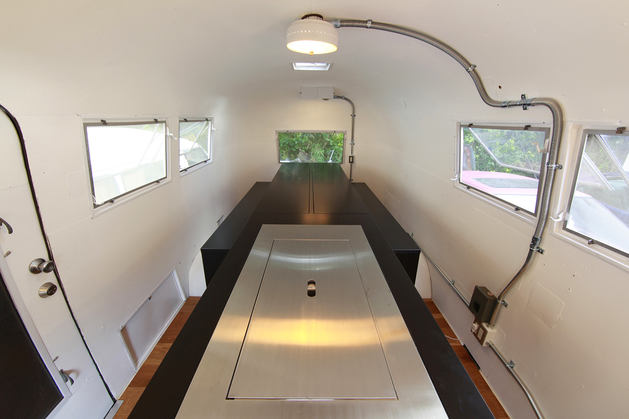



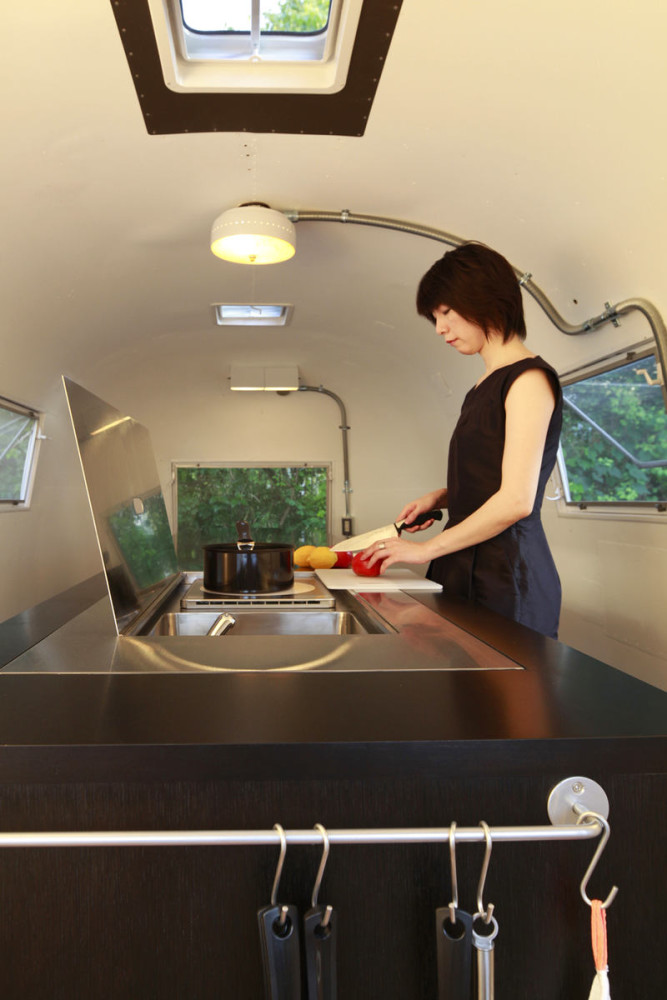




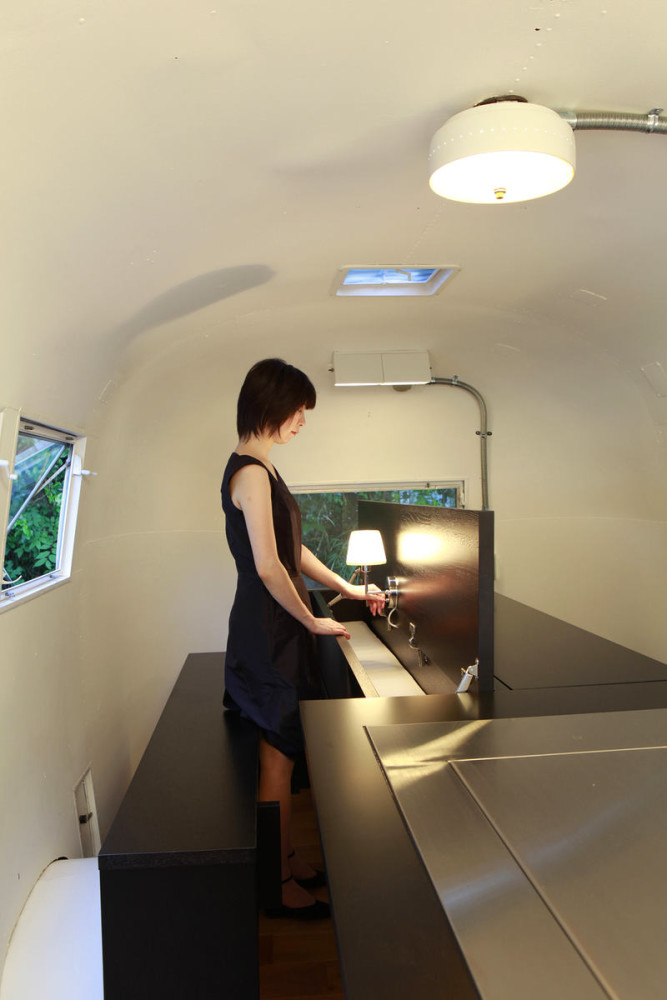
6. Hidden dining room
In small spaces it is important to take every detail into account.square metre of space. Architect John Handley of Pulltab Design found a balance between convenience and practicality, while staying within the budget of a young couple who asked him for help. An interesting solution for saving space in the apartment was a “smart table” that can be easily tucked into the wall when not in use. The tabletop is made of inexpensive lightweight material (MDF) and rests on a custom-made support mechanism. Now the room can host movie nights or dinners for friends, depending on the mood of the owners.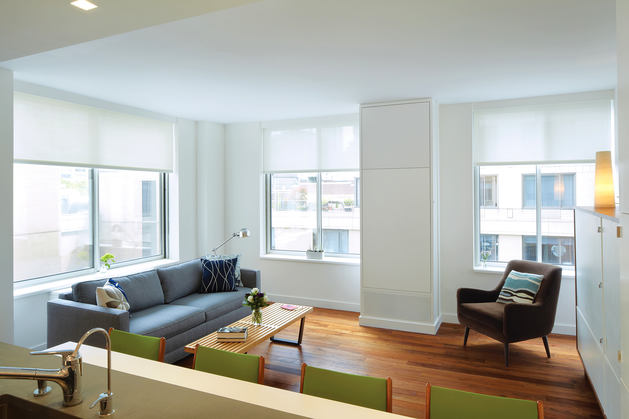
 dwell.com
dwell.com


